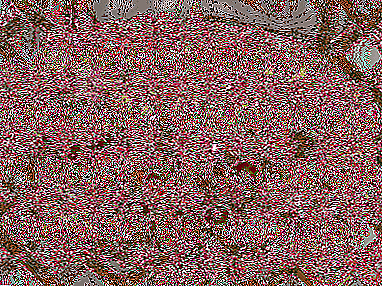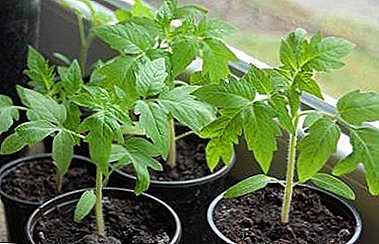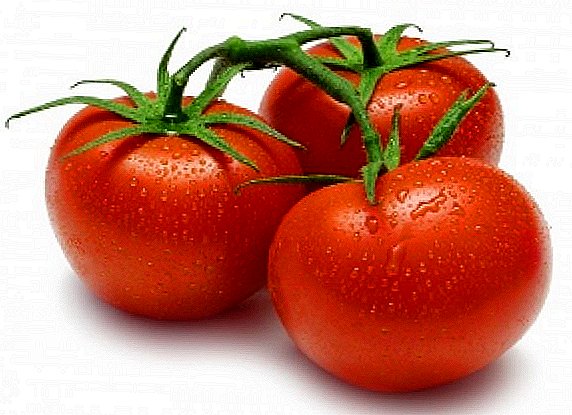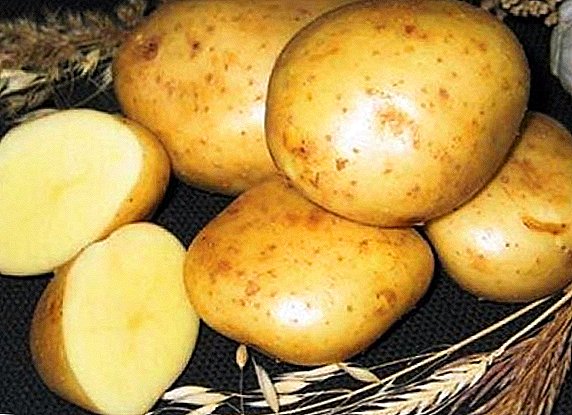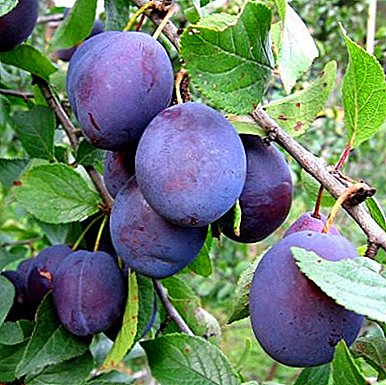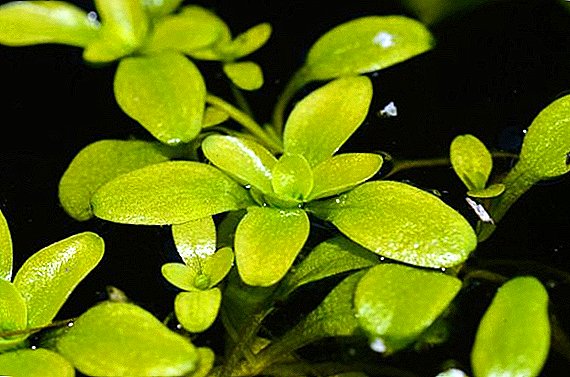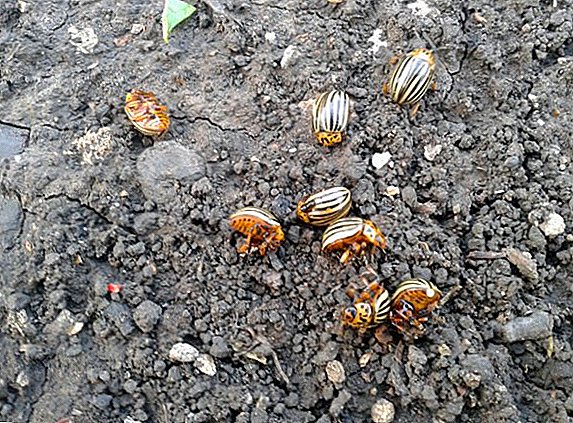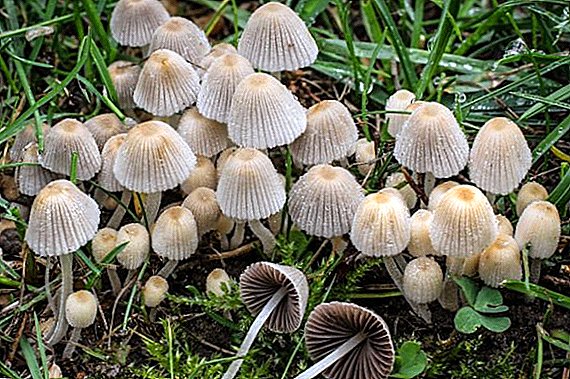 In the forest and steppe zone, sometimes you can find mushrooms that have a strange appearance, and do not differ in large size. They grow on dead wood or near animal excrement.
In the forest and steppe zone, sometimes you can find mushrooms that have a strange appearance, and do not differ in large size. They grow on dead wood or near animal excrement.
Today we will consider representatives of the now-disbanded family of dung beakers: how they look, where they meet, and whether they can be eaten.
White
Appearance. The cap has an elongated ovoid shape at the initial stage, and is elongated and dome-shaped after maturation. The height varies from 5 to 20 cm, the diameter is from 5 to 10 cm. It is painted white or grayish, with dark scales of small size visible on the surface of the skin. The top of the cap may be light brown. The flesh is white, has no palpable taste or smell. The plates of young mushrooms are purely white, wide, and arranged freely. When ripe, they first turn pink, and then completely blacken during the process of self-digestion.  Coprinus comatus The actual length of the leg is from 10 to 35 cm, but the visible part does not exceed 10 cm in length, since 2/3 of the legs are hidden under the dome of the cap. The color is white, hollow inside. The base of the stem, which is in the ground, has a thickening.
Coprinus comatus The actual length of the leg is from 10 to 35 cm, but the visible part does not exceed 10 cm in length, since 2/3 of the legs are hidden under the dome of the cap. The color is white, hollow inside. The base of the stem, which is in the ground, has a thickening.
Where is growing. It is found throughout the temperate zone of the Northern Hemisphere. It prefers humus-rich soils, and grows in large amounts on pastures and near farms. It is difficult to meet a white dung in the forest, and they can appear in landfills and dumps. It is important for the fungus that the substrate be rich in plant or animal residues.  Seasonality and edibility. White dung beetles appear in March, and disappear from the fields at the end or in the middle of autumn (depending on the region). Mushrooms are collected only on clean soils away from landfills and various enterprises. Harvesting is carried out after the rain, as the fruit body must be young so that it can be eaten without fear.
Seasonality and edibility. White dung beetles appear in March, and disappear from the fields at the end or in the middle of autumn (depending on the region). Mushrooms are collected only on clean soils away from landfills and various enterprises. Harvesting is carried out after the rain, as the fruit body must be young so that it can be eaten without fear.
In the fall, you can collect such edible mushrooms as cep, oyster mushrooms, milk mushrooms, umbrella, goatling, chanterelle, butterdog, boletus, honey agaric, boletus, boletus, boletus gum, rowing.
Terms of use. Remember, this mushroom is completely edible, only until the fruit body is ripe. After ripening, eating dung beetle is dangerous. The species is characterized by the fact that after maturation, it begins to digest itself, releasing special substances. As a result, old mushrooms can be considered rotten, and a rotten product cannot be safe.  Despite its edibility, it is recommended to boil fruit bodies before use. After that, you can fry, simmer, pickle or pickle. Immediately after harvesting, fruit bodies should be processed as soon as possible, since the process of self-digestion does not stop even at low temperatures. It is also worth remembering that warehouses with other mushrooms cannot be stored and stored, otherwise they will also begin to rot.
Despite its edibility, it is recommended to boil fruit bodies before use. After that, you can fry, simmer, pickle or pickle. Immediately after harvesting, fruit bodies should be processed as soon as possible, since the process of self-digestion does not stop even at low temperatures. It is also worth remembering that warehouses with other mushrooms cannot be stored and stored, otherwise they will also begin to rot.
Important! Old sources indicate that a white dung can cause poisoning when consumed with alcohol. This is a mistaken mistake.
Video: white dung - what it looks like to cook
Snow white
Appearance. The cap is ovoid, small, has a diameter of not more than 3 cm. In old mushrooms it becomes bell-shaped or conical. The skin is pure white, the surface is dotted with a powdery scurf that is easily washed. The flesh is white, thin. In old mushrooms is practically absent. The plates in young fruit bodies are gray, then turn black and become watery. Leg very thin, has a length of 5-8 cm. At the base there is a characteristic swelling. The surface of the foot is covered with the same white coating as on the bonnet.  Coprinopsis nivea Where is growing. Since the white dung is a saprotroph (it feeds on the remains of living beings), it grows only in those places where cattle or horses graze regularly. Fruit bodies are formed either on or near manure.
Coprinopsis nivea Where is growing. Since the white dung is a saprotroph (it feeds on the remains of living beings), it grows only in those places where cattle or horses graze regularly. Fruit bodies are formed either on or near manure.
Seasonality and edibility. Dwarf fruits in the summer and autumn months. Mushroom is poisonoustherefore, it cannot be collected, much less used.
Mushrooms such as pale toadstool, amanita mushroom, falcipods, pigs, some types of govorushek, russules, and bolettes are dangerous for humans.
Hairy-legged
Other names: fluffy dung beetle, soft-footed dodger.  Coprinopsis lagopus Appearance. The cap resembles a spindle in shape, 1-2 cm in diameter, 2 to 4 cm in length. Young mushrooms enter the maturity stage after two days, after which the cap opens. In mature representatives of the species, it has the shape of a bell. The peel is painted in dark olive color. The surface is littered with white flakes, so the mushroom from a distance appears pure white. The flesh is white, very thin, breaks at the slightest touch. Leg length from 5 to 8 cm, thin, can be bent in the process of growth. Painted white. On the surface there are many white flakes. The plates are narrow, free, gray in the initial stage, then turn black and collapse.
Coprinopsis lagopus Appearance. The cap resembles a spindle in shape, 1-2 cm in diameter, 2 to 4 cm in length. Young mushrooms enter the maturity stage after two days, after which the cap opens. In mature representatives of the species, it has the shape of a bell. The peel is painted in dark olive color. The surface is littered with white flakes, so the mushroom from a distance appears pure white. The flesh is white, very thin, breaks at the slightest touch. Leg length from 5 to 8 cm, thin, can be bent in the process of growth. Painted white. On the surface there are many white flakes. The plates are narrow, free, gray in the initial stage, then turn black and collapse.  Where is growing. It is found both in pastures where it is engaged in the processing of manure, and in old forest plantings. The fungus can eat rotten wood, as well as rotting fallen leaves.
Where is growing. It is found both in pastures where it is engaged in the processing of manure, and in old forest plantings. The fungus can eat rotten wood, as well as rotting fallen leaves.
Often there is a problem with the identification of the fungus, since the fruit body forms and decomposes within a few days, so it is very difficult to meet the young fungus.
Did you know? Many mushrooms have healing properties. For example, the skin of fungi-rain can be used as a plaster, as its reverse side is completely sterile, and also exhibits bactericidal properties.
Seasonality and edibility. Fluffy fungus fruits during mass grazing. As soon as animal waste disappears, fruit bodies cease to form. The approximate growth period is summer-autumn.  Hairy foot do not eat. The fungus is not classified as poisonous, but given the short period of decomposition, you can even poison young specimens, so it is better not to risk it.
Hairy foot do not eat. The fungus is not classified as poisonous, but given the short period of decomposition, you can even poison young specimens, so it is better not to risk it.
Interesting to read: Edible mushrooms of Ukraine: TOP-15
Home
Appearance. The hat has the shape of a bell; in old mushrooms it becomes an umbrella. The diameter is 2-5 cm, the skin is light brown with a yellowish tinge. On the surface there are small white scales in the form of small dots. The flesh is white, thin, odorless, rather elastic. Leg 4-8 cm long, very thin, fibrous, hollow. The surface is painted white, smooth. The plates are white, thin, wide. In mature mushrooms turn gray and then turn black.  Coprinellus domesticus Where is growing. Home dung beetle feeds on dead or rotting wood, so it grows on old stumps or dry trees. In the forests almost does not occur, as in open areas.
Coprinellus domesticus Where is growing. Home dung beetle feeds on dead or rotting wood, so it grows on old stumps or dry trees. In the forests almost does not occur, as in open areas.
Important! Mushrooms can also grow in very damp areas, which is why the species got its name.
Seasonality and edibility. They appear only in summer, and in early September they gradually disappear. Home dung beetle is inedible mushroomtherefore, it cannot be eaten or stored with other edible mushrooms. 
Woodpecker
Other names: variegated, muddy, dyatovidny.
Appearance. The hat has an ovoid shape with a slight lengthening. Diameter - from 6 to 10 cm. Old mushrooms have a bell-shaped cap. The surface is painted in dark brown or light black color. The peel is covered with a multitude of white scales, so from a distance the mushroom appears white. The flesh is white, has a very unpleasant smell, rather thin. The leg is very long and thin, its length is from 10 to 30 cm. Inside it is hollow, tapers upwards. Painted white. At the base there is a thickening. Nearby is a fleecy raid. Plates in young mushrooms are white with a faint pinkish tinge. In old fruit bodies they become gray, and after - black.  Coprinopsis picacea Where is growing. Woodpecker dung beet prefers humus-rich soils, as well as the presence of a large amount of rotting wood. The species is found in deciduous forests in dry shaded areas.
Coprinopsis picacea Where is growing. Woodpecker dung beet prefers humus-rich soils, as well as the presence of a large amount of rotting wood. The species is found in deciduous forests in dry shaded areas.  Seasonality and edibility. Fruit bodies are formed from August to November. Data on the edibility of the fungus vary, but in most literary sources the woodpecker is described as inedible mushroom. There is also evidence that it can cause hallucinations.
Seasonality and edibility. Fruit bodies are formed from August to November. Data on the edibility of the fungus vary, but in most literary sources the woodpecker is described as inedible mushroom. There is also evidence that it can cause hallucinations.
Discover a variety of edible forest mushrooms.
Flickering
Other names: crumbling, mica.  Coprinellus micaceus Appearance. The cap is bell-shaped in shape, only in very young representatives ovoid. The skin is a light brown color with a dark spot in the center, its diameter is from 2 to 4 cm, height is 1-3 cm. The surface is covered with noticeable grooves. The edge of the cap may be even or slightly torn. The flesh is very thin, white in color, has no smell, the taste is sour. Leg rather long, 4-10 cm, thin, inside - hollow. At the base is brownish, however, most of it is painted white. The plates are thin, adherent, white with a brownish tinge. Old fungi have black ones.
Coprinellus micaceus Appearance. The cap is bell-shaped in shape, only in very young representatives ovoid. The skin is a light brown color with a dark spot in the center, its diameter is from 2 to 4 cm, height is 1-3 cm. The surface is covered with noticeable grooves. The edge of the cap may be even or slightly torn. The flesh is very thin, white in color, has no smell, the taste is sour. Leg rather long, 4-10 cm, thin, inside - hollow. At the base is brownish, however, most of it is painted white. The plates are thin, adherent, white with a brownish tinge. Old fungi have black ones.  Where is growing. Shimmering dung beetles grow only on rotting or dead wood. They are found in dense forests, parks, and also in forest belts. Grow exclusively in groups, like mushrooms.
Where is growing. Shimmering dung beetles grow only on rotting or dead wood. They are found in dense forests, parks, and also in forest belts. Grow exclusively in groups, like mushrooms.
Important! Not found in coniferous forests and plantings.
Seasonality and edibility. Fruits from May to November. Mushrooms appear in waves. Refer to inedible for the reason that after collecting the process of self-destruction proceeds very quickly - because of this, the product quickly deteriorates and becomes unusable.
Ordinary
Appearance. The cap is very small, the diameter is from 1 to 3 cm. The skin is an ellipse in shape, covered with furrows, painted gray-gray. The edges of the cap are uneven, they rise in overripe specimens. The flesh is very thin, white, fragile, does not smell. Leg - 5-10 cm, thin, straight or with a slight slope. Painted white, fibrous, inside - hollow. There is a slight thickening at the base. Plates are free, in young mushrooms - white, in mature ones - dark gray or black.  Coprinopsis cinerea Where is growing. Grows singly or in small groups on soil rich in humus. It is found in gardens and parks, as well as in landfills. A lot of mushrooms appear after small precipitation.
Coprinopsis cinerea Where is growing. Grows singly or in small groups on soil rich in humus. It is found in gardens and parks, as well as in landfills. A lot of mushrooms appear after small precipitation.  Seasonality and edibility. Appear from late May to mid-September.
Seasonality and edibility. Appear from late May to mid-September.
As for edibility, opinions once again diverge. Given the speed of self-destruction of the fruit body, mushrooms are not very popular. Common dung beetles in most sources are classified as edible mushrooms, however, given that they need to be prepared as soon as possible after collection, otherwise they will cause poisoning.
Read also about edible and poisonous mushrooms growing on trees.
Scattered
Other name - dung beetle common.  Coprinellus disseminatus Appearance. The hat is shaped like a small jellyfish. In old mushrooms it is prostrate, in young it is ovate, about 1 cm in diameter. The skin is cream-colored. The surface is velvety, covered with remnants of bedspreads. The flesh is practically absent, tender and thin. There is no smell. The stem is 1 to 5 cm long, very thin, fragile, hollow, painted white in young mushrooms, and after maturation it becomes gray with a violet tinge. The plates are free, convex, white, then gray or black.
Coprinellus disseminatus Appearance. The hat is shaped like a small jellyfish. In old mushrooms it is prostrate, in young it is ovate, about 1 cm in diameter. The skin is cream-colored. The surface is velvety, covered with remnants of bedspreads. The flesh is practically absent, tender and thin. There is no smell. The stem is 1 to 5 cm long, very thin, fragile, hollow, painted white in young mushrooms, and after maturation it becomes gray with a violet tinge. The plates are free, convex, white, then gray or black.
Important! This species dries out in the absence of high humidity. The process of self-digestion stops.
Where is growing. Grows in the temperate zone. It is found on dry trees and stumps, where it forms a real bouquet of small fruit bodies. On one tree can be located several hundred mushrooms.  Seasonality and edibility. Appear from late spring to early fall. The edibility of the fungus has not been established. Given the size of the fruit body and the almost complete absence of pulp, it is better not to eat these kind of mushrooms.
Seasonality and edibility. Appear from late spring to early fall. The edibility of the fungus has not been established. Given the size of the fruit body and the almost complete absence of pulp, it is better not to eat these kind of mushrooms.
Mushrooms such as non-nurseries, ezhovikov, ryadovki, often grow in groups and form the so-called "witch circles".
Romanesi
Appearance. The hat has the shape of an umbrella with slightly rounded edges. The diameter is 3-6 cm. Peel is beige in color, but due to the presence of a huge amount of dark scales, the overall color is gray with shades of yellow. The flesh is practically absent, since most of the cap is a plate. A thin layer of pulp is painted white. Leg - 6-10 cm in length, dense, medium thickness. The surface is dirty gray, hollow inside, fragile. The plates are free, frequent, white in young fruit bodies, and black in mature ones.  Coprinopsis romagnesiana Where is growing. It grows on decaying wood, therefore, it is found both in forests, and in parks and in private plots. Prefers a cool climate. It grows in small groups.
Coprinopsis romagnesiana Where is growing. It grows on decaying wood, therefore, it is found both in forests, and in parks and in private plots. Prefers a cool climate. It grows in small groups.
Seasonality and edibility. Mushrooms appear in the spring and then in the fall. In the summer, the mycelium bears fruit only in the northern regions. Romanesi consider conditionally edible speciesbut only at a young age. Mushrooms with blackened plates are forbidden.
Find out which mushrooms grow in May.
Senny
Other name - panolous hay.  Panaeolus foenisecii Appearance. Hat in diameter from 1 to 2 cm, bell-shaped. Peel beige or white-brown color. The surface is smooth, the flesh is light, very thin. The leg is thin, from 2 to 8 cm in length. It can be straight, but in most cases it has several bends. Painted in light gray with a barely noticeable coating. The plates are brown, free, and become black after aging.
Panaeolus foenisecii Appearance. Hat in diameter from 1 to 2 cm, bell-shaped. Peel beige or white-brown color. The surface is smooth, the flesh is light, very thin. The leg is thin, from 2 to 8 cm in length. It can be straight, but in most cases it has several bends. Painted in light gray with a barely noticeable coating. The plates are brown, free, and become black after aging.  Where is growing. Occur in the fields, meadows and lawns. They love fertile light soil. Grow only in groups.
Where is growing. Occur in the fields, meadows and lawns. They love fertile light soil. Grow only in groups.
Seasonality and edibility. Bulk appear in September-October, but in small quantities occur from April to December.
Mushroom do not eatas it causes hallucinations and paranoia. Also, after eating can be a disorder of the digestive tract. When used in large quantities has a strong effect on the central nervous system, because of which there are mental disorders.
Gray
Other name - ink.
Appearance. The diameter of the cap is 5-10 cm. The shape of young mushrooms is ovoid, and in mature mushrooms it is bell-shaped. Peel is gray with a reddish tinge. On the surface there are small scales. The flesh is very thin, light, and darkens quickly when exposed to air. There is no smell, the taste is sweet. Leg -long, 10-20 cm, thin, hollow. The surface is painted in light gray. The plates are white, free, and mature mushrooms have black ones.  Coprinopsis atramentaria Where is growing. The mushroom prefers a humus-rich soil, therefore it is found in large quantities on farms, as well as in places of grazing. In the forest it grows near rotten or decaying trees. Can grow in the garden or in the garden if conditions are acceptable.
Coprinopsis atramentaria Where is growing. The mushroom prefers a humus-rich soil, therefore it is found in large quantities on farms, as well as in places of grazing. In the forest it grows near rotten or decaying trees. Can grow in the garden or in the garden if conditions are acceptable.
Seasonality and edibility. Appear from May to October. Mushrooms grow in small groups. Gray dung beetle belongs to conditionally edible mushrooms. Only young specimens with light plates can be eaten.
Terms of use. After the preliminary heat treatment, which is carried out in the shortest possible time after harvesting, mushrooms can be fried, stewed, salted or pickled. Drying is not carried out.  Note that gray dung in some cases is used as a remedy for alcoholism, as when used with alcohol it causes poisoning with very unpleasant symptoms. Poisoning occurs even if the blood contains a small dose of alcohol decomposition products.
Note that gray dung in some cases is used as a remedy for alcoholism, as when used with alcohol it causes poisoning with very unpleasant symptoms. Poisoning occurs even if the blood contains a small dose of alcohol decomposition products.
Video: cooking gray dung
Did you know? Gray dung beetle is used to obtain ink. It is left in the pot until complete decomposition, then filtered and glue is added. Such ink after drying gives a special pattern, therefore, it is used to protect bills and important documents from counterfeiting.
Folded
Appearance. The cap has a fancy shape: flat in the center and dome-shaped at the edges. The surface of the trough symmetrical grooves. The diameter is 2-3 cm. Peel - gray-yellow, in old mushrooms becomes chocolate. The flesh is thin, fragile, light. The length of the leg - from 4 to 8 cm, it is very thin, hollow inside, in diameter and appearance comparable to the stem of a dandelion. Painted in a yellowish-green color, translucent. Plate - rare, thin, free. Color from pale gray to light brown, after full maturation is not destroyed.  Parasola plicatilis Where is growing. It grows in open spaces in the grass, preferring the soil rich in humus. May be found in gardens or in gardens.
Parasola plicatilis Where is growing. It grows in open spaces in the grass, preferring the soil rich in humus. May be found in gardens or in gardens.
Seasonality and edibility. Mycelium fruits from spring to the first frost. Mushrooms go through a full cycle per day, starting from the formation of the above-ground body and ending with the death of the fungus.  As for edibility, it is not described in the literature. This is due to the short life cycle, as well as the almost complete absence of pulp in the cap of the fungus and the small size of the fruit body.
As for edibility, it is not described in the literature. This is due to the short life cycle, as well as the almost complete absence of pulp in the cap of the fungus and the small size of the fruit body.
Most dung beetles are not eaten, and those species that are edible are not distinguished by exquisite taste or aroma. Given that the fruit body deteriorates rapidly, mushroom pickers often bypass these mushrooms by the side.


